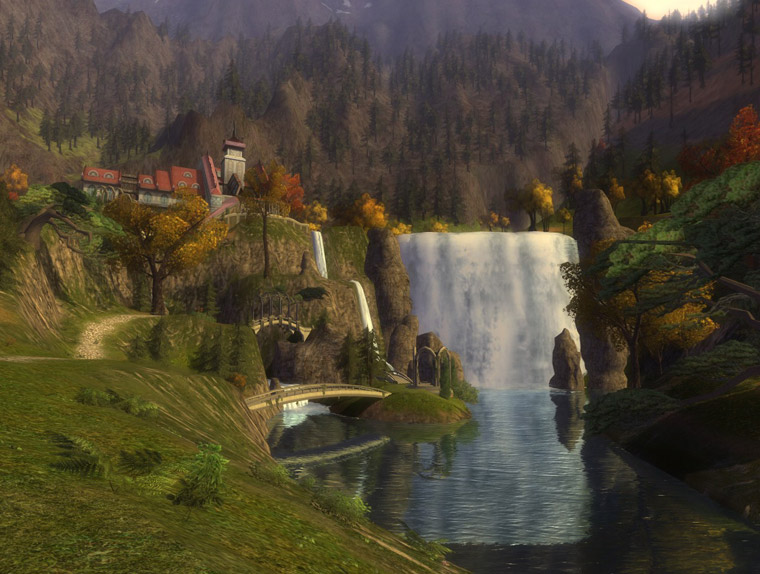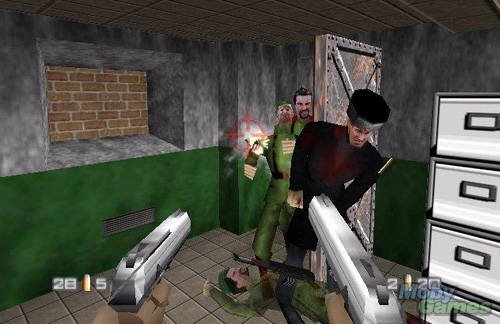So I haven't been around Sure as Shiretalk the last week or two, and I'll tell you why: over the weekend of March 27-28, The Lord of the Rings Online offered a $9.99 deal for the Mines of Moria and Siege of Mirkwood expansions plus 30 days of free play. So I've returned to Middle-earth in the guise of Haldaran Casarmacil, Protector of the Shire (I love the title system in LotRO). You'll be happy to know I've leveled up four times since then; I'm currently sitting about halfway to level 43.
What I love most about this game is how incredibly true to the novel it feels. I've played most of the LotR-based games out there, and most of them are forced to sacrifice much of the subtlety and restraint employed by Tolkien -- espeically regarding the use of "magic" -- in favor of, presumably, attracting and entertaining a wider audience than die-hard Tolkien fans (why this "wider audience" requires all that flashy Magic Missile bullshit to be adequately entertained is entirely beyond me). But if not for Gandalf very occasionally creating fire or lighting his staff up like a lamp, The Lord of the Rings would be basically devoid of overt displays of supernatural power. Most of Middle-earth's magic is in the land, in the creatures that inhabit it, and in the interactions between good and evil intentions -- most emphatically not at the end of a wand or the tip of somebody's fingers.
Unlike titles such as The Third Age (a Final Fantasy clone with flashy spells for every class) or The Two Towers/The Return of the King (aka Dynasty Warriors in Middle-earth), LotRO keeps the offensive magic and flashy sword-and-sorcery nonsense to the minimum necessary, and finds ways to work it into the game that effectively maintain Tolkien's vision. Players have Morale rather than Health; you retreat to a rally point rather than die and get resurrected. Consequently, your hitpoints are affected by abstract stimuli, most notably fear, as well as the common orc-sword. For example, should you encounter a great source of terror like a Ringwraith or a dragon, you take a noticeable hit to your total number of HP (which is then removed when you either defeat that enemy or remove yourself from its presence; there are of course many ways to partially/completely counteract these fear effects). Accordingly, then, the "healer" class is a Minstrel who keeps his/her allies in the fight by inspiring them instead of performing on-the-spot surgery and blood transfusions.
 Beyond that, the storytelling also feels very Tolkienesque; although I'm sure his perfectionism would've found countless things to disagree with, the quests and "Epic" plotline feel close enough to his style and sensibilities that a Tolkien fanatic/purist like myself can really enjoy the feeling of (near) total immersion in Middle-earth and its cultures.
Beyond that, the storytelling also feels very Tolkienesque; although I'm sure his perfectionism would've found countless things to disagree with, the quests and "Epic" plotline feel close enough to his style and sensibilities that a Tolkien fanatic/purist like myself can really enjoy the feeling of (near) total immersion in Middle-earth and its cultures.
One final comment: I cannot express how beautiful and how detailed this game is. When I first started playing, I wandered off to Weathertop to check out the scenery, and when I got to the top, I checked for the rock with Gandalf's runes written on it. It's there. Even locations that Tolkien left with almost no descriptions are startlingly, awesomely depicted. My jaw dropped when I first set eyes on the massive tower of Annúminas on the shores of Lake Evendim; Rivendell nearly broke my heart with its autumnal splendor; the Shire is every bit as charming and peaceful as you'd expect it to be.
In other words, I love this game. It's a brilliant rendering of my favorite novel of all time.
Last comment: I've also loaded up the GoldenEye 007 again recently. God this game rocks my socks.

No comments:
Post a Comment